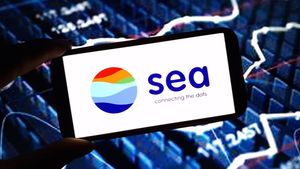Your Guide to Sending Press Releases Via Email
By:
PRWire 360
March 20, 2023 at 11:38 AM EDT
If you want to get your message out to a wide audience, there's no better way than sending a press release. A press release is a written statement that announces something newsworthy and is distributed to the media for publication. A press release is a powerful tool for any business or organization looking to raise its profile, attract customers, or gain media coverage.
One popular method for distributing press releases is via email. In this blog post, we will provide you with a guide to sending press releases via email, including some tips on making sure your press release gets noticed. Step 1: Craft a compelling press release. The first step in sending a press release via email is to write a compelling one. Your press release should be newsworthy, timely, and relevant to your target audience. Ensure your press release is well-written, with a clear headline, concise summary, and relevant quotes or statistics. Step 2: Build a media list The next step is to build a media list. This involves identifying the journalists and media outlets most likely to be interested in your story. You can use tools like PRWire360 to help you build a targeted media list based on your industry, geography, and other criteria. Step 3: Personalize your email Once you have your media list, it's time to start sending your press release via email. The key to success here is personalization. Take the time to personalize your email to each journalist you are contacting. Mention their name and why they would be interested in your story. Step 4: Use an attention-grabbing subject line Your subject line is the first thing journalists will see when they receive your email. Make sure it is attention-grabbing and clearly states the news value of your story. Avoid using generic subject lines like "Press Release" or "News Alert." Step 5: Include your press release as an attachment Ensure you attach your press release as a PDF or Word document to your email. Don't include it in the body of the email as it can be difficult to read and may not display correctly on all devices. Step 6: Follow up Don't be afraid to follow up with journalists who have not responded to your initial email. However, respect their time and don't spam them with multiple follow-up emails. Conclusion Sending a press release via email can be a powerful way to reach a wide audience. By following these tips and using tools like PRWire360 to help you build a targeted media list, you can increase your chances of getting your press release noticed by the right people. Remember to craft a compelling press release and personalize your email to each journalist you contact. More NewsView More
These Are the Hottest Upgrades From the Q3 Reporting Cycle ↗
Today 9:06 EST


Why Bitcoin ETFs Like IBIT May Be Set to Surge in 2026 ↗
Today 7:38 EST

Up Over 20% in 2025, These 3 Stocks Are Boosting Buyback Capacity ↗
December 01, 2025
Via MarketBeat

Congress Beat the Market Again—Here Are the 3 Stocks They Bought ↗
December 01, 2025
Via MarketBeat
Recent QuotesView More
Stock Quote API & Stock News API supplied by www.cloudquote.io
Quotes delayed at least 20 minutes. By accessing this page, you agree to the Privacy Policy and Terms Of Service.
© 2025 FinancialContent. All rights reserved.
|
